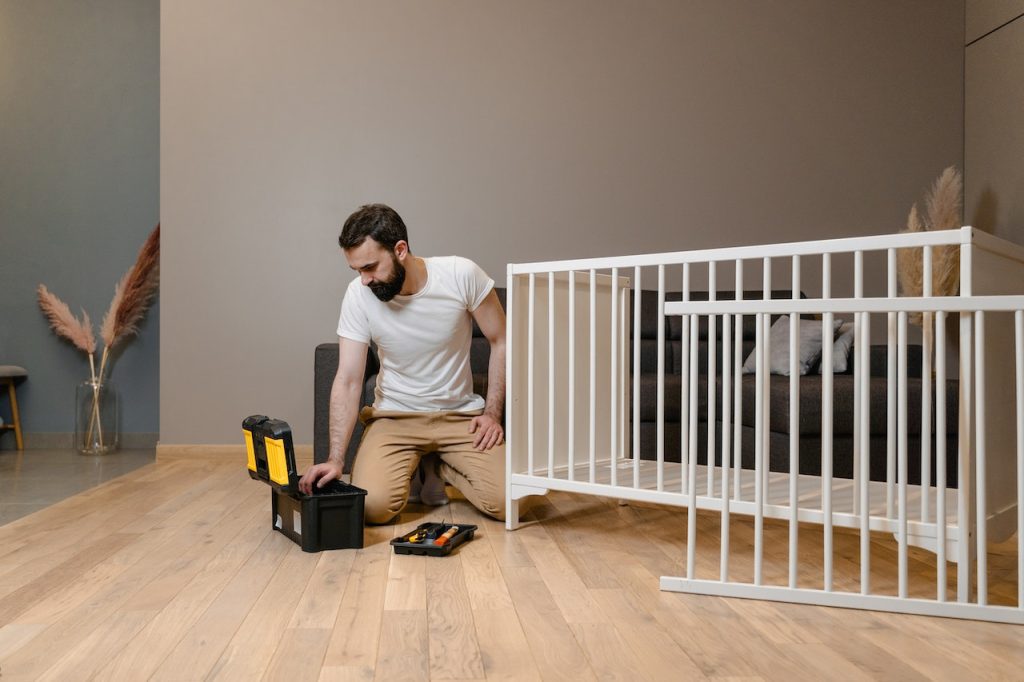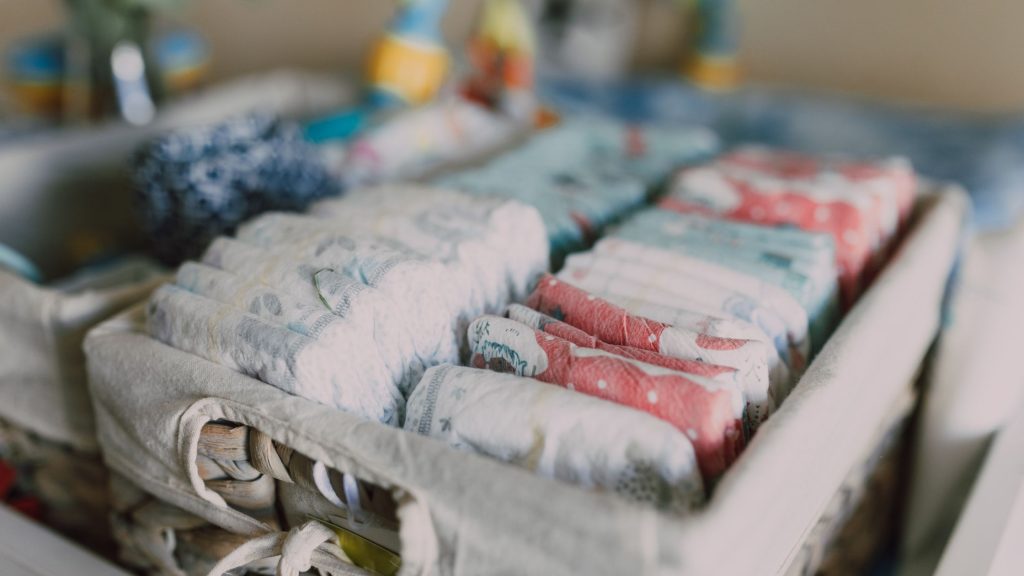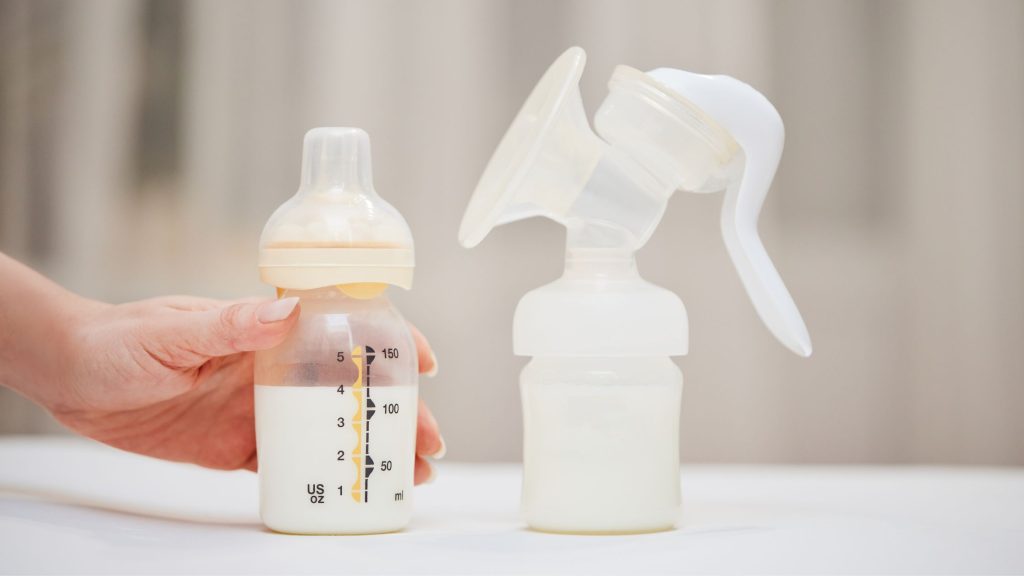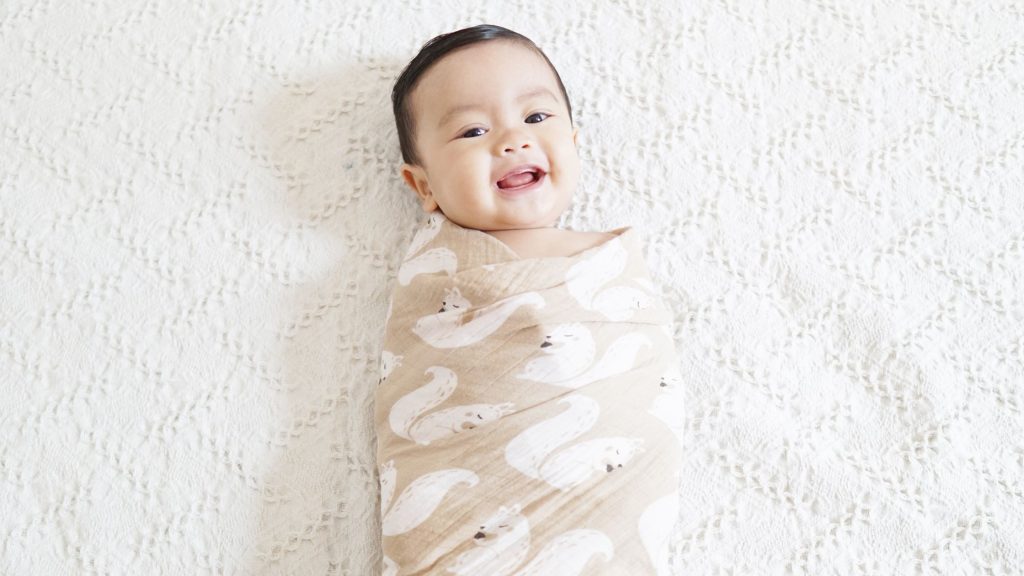
From Hospital to Home: Surviving Your Newborn’s First Night at Home
- Created:
10. 10. 2023 - Updated:
10. 10. 2023
Admit it:
The excitement of bringing your baby home is unparalleled, but that first night can be a rollercoaster of emotions and challenges.
Fortunately:
We’ll provide invaluable insights to make your newborn’s first night at home as smooth and memorable as possible.
From swaddling and feeding strategies to setting up a safe sleep environment, we’ve got you covered!
So:
Read on for tips to confidently manage your newborn’s first night while creating a peaceful start to your parenting experience.
Shall we?
What to Expect on the First Night
Fact:
The first night with your newborn is a thrilling yet unnerving experience. It is filled with intriguing and surprising behaviors that might catch first-time parents off guard.
However:
Understanding these occurrences will help alleviate concerns and ensure a smoother transition into parenthood on that crucial first night.
Now:
Expect your baby to wake up frequently, as they must be fed every few hours for proper nourishment and growth. Their cries may seem relentless, but it’s their primary means of communication, signaling hunger, discomfort, or the need for a diaper change.
Also:
Be prepared for startling moments when your baby exhibits the Moro reflex—an involuntary response involving movement of their arms and legs. According to John Hopkins Medicine, this reflex is normal and diminishes with time, usually around 5-6 months of age.
In addition:
Newborns also have irregular breathing sounds. Your baby might make grunting or snuffling sounds while sleeping. Don’t be alarmed, as these sounds are typically harmless.
Also:
Your baby’s head might have a cone-like shape. This is due to the pressure during childbirth. It will gradually round out.
Some newborns may still have vernix—a waxy substance, and fine hair on their skin. Be rest assured that these features will naturally disappear with time.

Preparing Your Home Before Arrival
Listen:
Before your newborn’s first night at home, it’s crucial to have everything ready to ensure a smooth and safe transition into parenthood.
Here’s why:
These preparations facilitate a positive start for your newborn, foster their well-being, and promptly meet their needs. Thus reducing stress and anxiety during those initial days and nights.
Furthermore:
A baby-proofed home is vital for your child’s safety, minimizing the risk of accidents as they explore their surroundings.
Here’s a detailed breakdown of what to have ready:

1. Diapers
Hear me out:
Diapers are a parental lifeline and an absolute essential.
Make sure you have an ample supply of diapers, whether you opt for disposable or cloth. Additionally, consider sizing your diapers correctly to prevent leaks and discomfort.
Staying well-stocked is fundamental to caring for your newborn’s hygiene and overall well-being.
However:
It’s not just about quantity; it’s also about convenience. Create a designated diaper-changing station within arm’s reach, equipped with wipes, diaper rash cream, and a soft, waterproof changing pad.
This organized setup makes those frequent changes convenient for you and your baby.

2. Feeding Supplies
First off:
Feeding supplies are a critical consideration for parents.
Now:
Your choice between breastfeeding or bottle-feeding determines the necessary equipment.
For breastfeeding:
Establish a snug nursing area with a comfortable chair and supportive breastfeeding pillow.
On the other hand:
If you opt for bottle-feeding, prioritize hygiene by thoroughly sterilizing bottles, nipples, and pacifiers. Ensure you have a readily available supply of formula or expressed breast milk.
Additionally:
Keep a steady supply of formula or expressed breast milk on hand to meet your baby’s frequent feeding needs.
According to the Centers for Disease Control and Prevention, newborns typically nurse every 1-3 hours during the first days. This ensures they receive the essential nourishment for their growth and development.
If you plan to pump breast milk, keep a breast pump and storage containers available to ensure a steady supply.
Ideally:
This preparation guarantees a smooth and nourishing feeding experience for you and your baby. As a result, the parent-child bond strengthens.

3. Safe Sleep Environment
Get this:
It’s important to create a safe sleep environment for your baby. Choose an appropriate sleep space like a crib or bassinet with a firm, comfortable mattress and fitted sheets.
Also:
The American Academy of Pediatrics advises parents to eliminate potential hazards by removing loose bedding, pillows, or stuffed animals from the sleeping area. This is to reduce the risk of SUIDs.
Prioritize a safe and cozy sleep setup that ensures your baby’s well-being and provides peace of mind for you and your baby.

4. Clothes and Swaddles
Want to know a secret?
Organizing your baby’s clothing is essential for their comfort.
Thats right!
Prepare a range of clothing, including onesies and sleepers, taking note of the season and temperature. Ensure your layering options keep your baby cozy without overheating.
Pro Tip:
Babies should not wear tight clothing because it restricts their movement and causes discomfort.

5. Baby Monitor
Investing in a reliable baby monitor is crucial for ensuring your baby’s safety and your peace of mind.
Why’s that:
A baby monitor allows you to closely observe and listen to your baby even when you’re not in the same room.
Now:
When selecting a baby monitor, consider your preferences and requirements. The Annie Baby Monitor app has features like video monitoring for a visual check and audio monitoring to hear your baby’s sounds.
Some baby monitors have movement monitoring features to track your baby’s movements.
In addition to gathering essential supplies, you should conduct thorough safety checks throughout your home. Here are some essential safety tips:
- Install safety gates at the top and bottom of stairs and use outlet covers to prevent electrical accidents. Also, secure cabinets with locks or latches to keep hazardous items out of reach.
- Ensure that all smoke detectors and carbon monoxide detectors are functioning correctly.
- Heavy furniture items like bookshelves, dressers, and TV stands should be anchored to the wall to prevent them from tipping over.
- Keep cords for blinds and curtains out of your baby’s reach, as they can pose a strangulation risk.
- Maintain a comfortable room temperature. WebMD advises that the ideal room temperature for newborns is between 68-72°F. This is to help your baby sleep comfortably without overheating or getting too cold.
- Babies often sleep better in a darkened room. Consider blackout curtains or shades to block out excess light, especially during naps and sleep.
- White noise can be soothing for babies as it mimics the sounds in the womb. However, ensure that the white noise is at an appropriate volume.
Feeding Your Newborn
Look:
Feeding your newborn on the first night is fundamental to their care. Whether you choose breastfeeding or formula-feeding, you must be attentive to your baby’s cues.
Now:
If you are breastfeeding, start it as soon as possible to promote bonding and stimulate milk production. Expect your newborn to nurse frequently, typically every 2-3 hours. Also, ensure a proper latch-on technique and consult a professional if needed.
Formula-fed newborns may eat every 2-3 hours, but individual needs vary. Healthychildren.org recommends that parents give their newborns 1-2 ounces of formula every 3 to 4 hours.
This is for parents who are exclusively feeding their babies with instant formula.
Also, it’s important to prepare formulas according to the manufacturer’s instructions. Ensure bottles and nipples are clean and properly sterilized as well.
Now:
It’s essential that parents recognize their baby’s signs of hunger. These include:
Lip-smacking
Turning toward the breast or bottle
Increased alertness
Rooting reflex—where a baby turns toward a stimulus on their cheek
In addition:
Observe signs of satiety like slowing down, releasing the breast or bottle, appearing content, and sometimes, falling asleep.
Remember:
These cues vary from baby to baby. Hence, being responsive to your newborn’s cues fosters a positive feeding and nurturing relationship that ensures their nutritional needs are met.
Consult a pediatrician or lactation consultant if you have concerns or questions about feeding your newborn.
Note:
Crying is a late hunger cue, so parents should try to avoid it.
Diapering Essentials
It’s no news:
Changing diapers is a frequent and essential task when caring for a newborn. Newborns typically need diaper change every 2-3 hours or whenever they show signs of a soiled diaper.
Now, parents should expect to change at least 8-12 diapers a day. A wet or moist diaper can lead to diaper rash, severe UTIs, and skin irritation.
Luckily:
This section contains a step-by-step guide on how to change a diaper and tips for organizing a diaper:
Let’s get to it!
Step 1: Gather your supplies: diapers, wipes, diaper rash cream, a changing pad, and a change of clothes.
Step 2: Gently lay your baby’s back on a safe, flat surface, such as a changing table or padded mat. Ensure the surface is not too cold.
Step 3: Loosen the diaper and use the front to clean any initial mess. Lift your baby’s legs gently and slide the soiled diaper out from underneath.
Step 4: Clean your baby’s bottom with wipes, making sure to wipe from front to back for girls to avoid infections.
Step 5: Allow your baby’s skin to air-dry for a moment, and apply diaper rash cream if needed.
Step 6: Place a clean diaper under your baby and fasten it firmly but not too tight. Ensure the umbilical cord area is not covered (if it hasn’t fallen off yet).
Step 7: Dress your baby in fresh clothes and hygienically dispose of the soiled diaper.
Simple right?
Now:
Let’s look at some tips for organizing a diaper-changing station for easier nighttime changes.
- Create a diaper-changing station near your baby’s crib for easy access during nighttime changes.
- Stock the station with enough diapers, wipes, and cream to last through the night. Ensure you have diapers in the appropriate size to prevent leaks.
- Use a dim nightlight to provide enough illumination without disrupting your baby’s sleep.
- Keep noise levels low to avoid waking your baby further. You should consider using a white noise machine to create a calming environment.
- Keep the station organized and clutter-free for efficiency during nighttime changes.
- Practice changing diapers during the day to become more efficient at nighttime changes.
Sleep Strategies
It’s a no-brainer:
Understanding your baby’s unique sleep cycle and implementing effective strategies can positively impact you and your baby’s well-being.
This section describes the unique sleep cycle of newborns as well as standard parenting strategies:
1. Newborn Sleep Patterns
Newborns exhibit sleep patterns quite distinct from those of older children and adults. Despite their extensive sleeping hours, it is characterized by frequent interruptions.
Their sleep cycles typically last 2-4 hours at a stretch. This means that they often wake up throughout the day and night, typically to feed and for diaper changes.
Also:
Newborns often struggle to distinguish between day and night. It is a phenomenon called day/night confusion, which is caused by their immature circadian rhythm.
This causes them to be more awake and alert during nighttime hours and more likely to sleep longer stretches during the day. Over time, with a consistent sleep routine, babies tend to adapt to the natural circadian rhythm.
While these interrupted nights can be challenging for parents, they are a temporary phase in your baby’s development. As they grow, sleep patterns tend to become more consolidated.
2. Preparing Your Newborn for Sleep
First off:
Swaddling is a tried-and-true method to comfort your newborn by wrapping them snugly in a lightweight blanket.
This practice mimics the secure feeling of the womb, but remember to leave enough room for healthy hip development.
Likewise:
White noise machines help create a consistent background sound that promotes better sleep. This familiar noise can be soothing as it resembles sounds heard in the womb.
Lastly:
Establish a calming bedtime routine that includes activities like a warm bath, gentle lullabies, or reading a short book. Consistency in these routines helps signal your baby that it’s time to relax and prepare for a peaceful night’s sleep.
3. Co-Sleeping Vs Crib/Blanket
Co-sleeping is where a baby sleeps in the same bed as the parents. This can offer convenience, especially for nighttime feedings, as your baby is within arm’s reach.
However:
The American Academy of Pediatrics recommends room-sharing but strongly discourages bed-sharing. This is preferable for the first six months of age.
Nevertheless:
It’s crucial for parents to follow strict safety precautions to prevent potential risks of suffocation or accidents. These precautions include creating a firm sleep surface and avoiding soft bedding or pillows.
On the other hand:
Pediatricians recommend placing your baby in a separate crib or bassinet in your room for safety reasons.
Why’s that?
This arrangement reduces the risk of Sudden Infant Death Syndrome (SIDS) and allows you to monitor your baby while providing a safe sleep environment.
It’s essential to choose a crib or bassinet that meets the United States Consumer Product Safety Commission’s safety standards and follows safe sleep guidelines.
Ultimately:
The choice between co-sleeping and using a crib or bassinet depends on your preferences and the safety measures you are willing to implement.

Real-Life Experiences
Now:
Let us delve into real-life stories and experiences shared by parents with firsthand experience.
They have provided valuable insights, relatable moments, and practical tips. Let’s get to it!
Charles, 27
Our first child came into our lives when my wife and I were 24 and 27, respectively. She cried all night, and it was a bit terrifying as we were first-time parents.
My wife and I took turns rocking her to sleep. She finally went to bed after a long night of rocking. Subsequently, we found out that doing knee bends while holding her calms her down.
Racheal, 33
I have three children, and I can confirm that what works for one child definitely doesn’t work for another!
I breastfed all my babies exclusively for the first few months of their lives. However, I started having blocked ducts until my lactation consultant advised me to place a heating pad or warm washcloth on my breasts.
My third child initially resisted the bottle when we started him on it. I had to pump breastmilk into a bottle and feed him before gradually introducing him to formula.
Maggie, 25
It was an emotional rollercoaster! My son made gurgling sounds that scared me even if I was already aware that those sounds were normal.
I had a baby nursery, so I ensured it was equipped with a baby monitor with audio and video monitoring features. I also had a cradling bassinet, as that was the only way to get him to nap during the day.
Conclusion
Let’s take a quick recap:
On your baby’s first night, you can anticipate challenges such as frequent feedings and erratic sleep. Parents would also experience strange newborn traits like startling reflexes and nighttime awakenings.
Fortunately:
You can prepare your home to assist your child in getting off to a good start. Some of the things you should check off your list include
- Diapers
- Baby monitor
- Safe sleep environment
- Clothes and swaddles
Additionally:
Preparing for your newborn’s arrival includes other minute details like diapering essentials, feeding routines, and sleep strategies. Remember to consult a pediatrician if you have any medical questions or concerns.
LastlyIf you found this guide on your newborn’s first night at home helpful, don’t hesitate to share your feedback in the comments section below.






